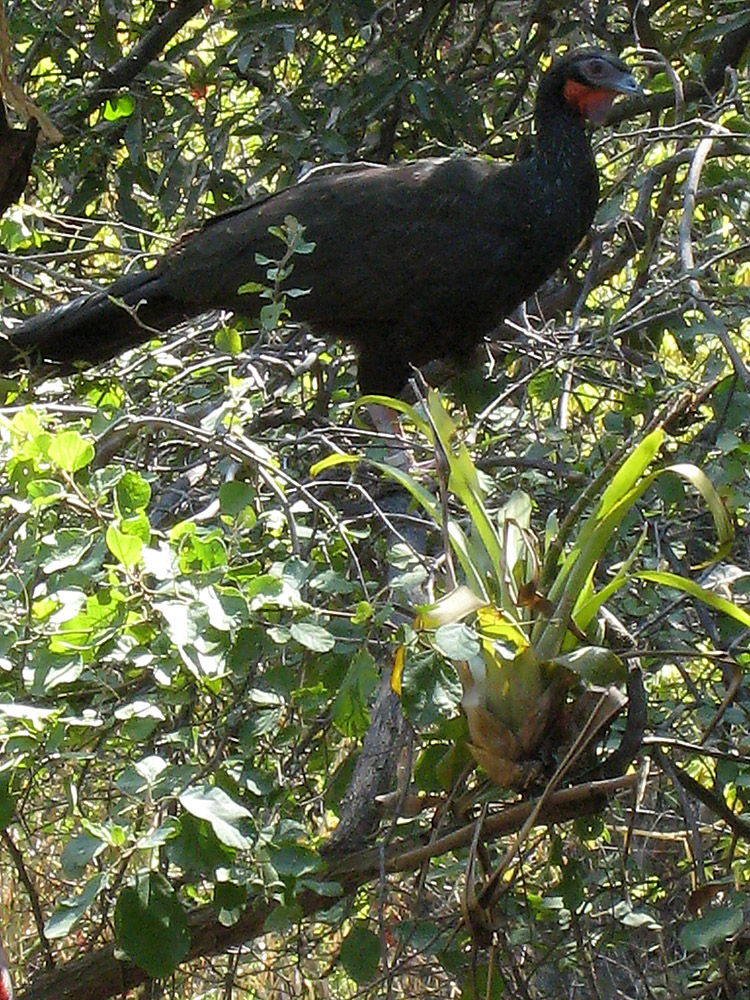

There was some disturbing news from northwest Peru, near where we’ve been working in the dry forest on Andean (spectacled) bear conservation research in collaboration with the Spectacled Bear Conservation Society: some local hunters had poached white-winged guans within a private, protected area. The white-winged guan, a bird somewhat similar to a wild turkey, was thought to be extinct until rediscovered by scientists in 1977. Efforts to breed it in captivity and reintroduce it to the wild have been ongoing for the last few decades, but although the population has increased, it is thought there are less than 300 adult white-winged guans in the wild. The species is listed as critically endangered by the International Union for Conservation of Nature (IUCN), the world’s largest global environmental network.
It would be easy to simply condemn poaching of white-winged guans as a shortsighted, illegal act, but this wouldn’t address the question of why the guans were hunted. One of the long-standing threats to guans has been hunting, and now poaching, for their meat. Like turkeys in North America, guans are large birds that taste good to humans. I wonder, then, whether the guans were killed for food. If so, this should lead us to consider a contributing factor in poaching: poverty and the lack of options that go along with it.

A camera-trap photo shows several white-lipped pecarries in the humid transitional forest of Cusco, Peru.
Every year there are many instances around the world (including North America) of wildlife poaching for trophies, for the commercial trade in their body parts, and for the commercial trade in wildlife as bushmeat. But there are also many instances of poaching for consumption by local residents living next to protected areas. This type of poaching illustrates the need to engage local residents in conservation actions and the need to work toward the sustainable development of local economies. If local people are struggling to make ends meet, and they don’t see benefits from conservation, don’t you think they might consider it a luxury to set aside wild areas and wild animals for conservation?
I’m not sure, but I suspect that past over-hunting of peccaries in the dry forest might explain why they’re rarely detected by our camera traps. Two species of peccaries, the white-lipped peccary and the collared peccary, have been frequently photographed by camera traps in humid forests of Cusco at the same elevation as the dry forest of Lambayeque, but it’s rare for camera traps in the dry forest to take photos of peccaries. Perhaps the dry forest is not good habitat for peccaries, but given that collared peccaries range across a wide variety of habitats, including other dry forests, I wonder whether their scarcity at our study site reflects past predation by hungry humans.
It’s nothing new to say that most conservation challenges arise from human actions, but it seems clear that we can’t address those conservation challenges without also considering the challenges facing the humans who live where we work. I don’t know much about how to manage the human component of conservation, so I’m glad that Samantha Young (see post Scientific Concepts for Non-scientists) and the rest of our Conservation Education Division are starting to work with us in the dry forest. We can use all the expert assistance we can get!
Russ Van Horn is a scientist in the Applied Animal Ecology Division of the San Diego Zoo Institute for Conservation Research. Read his previous post, The Bear Necessities.





















